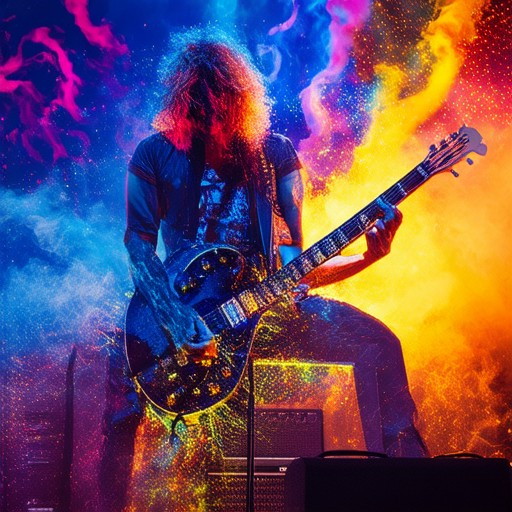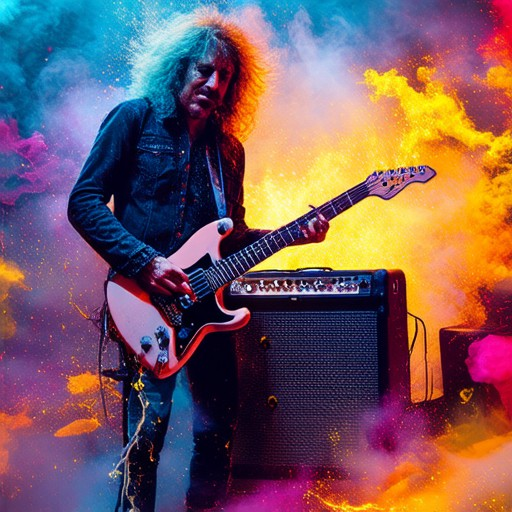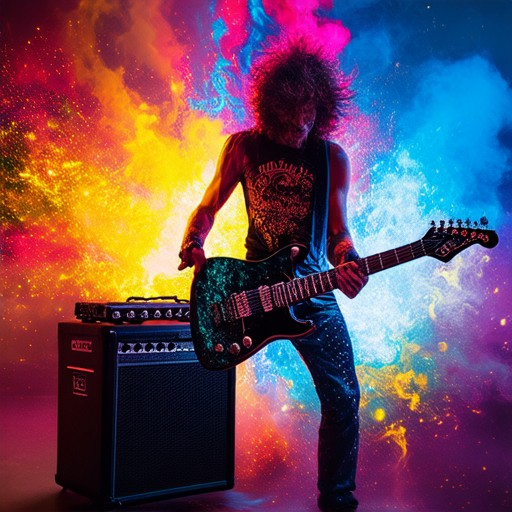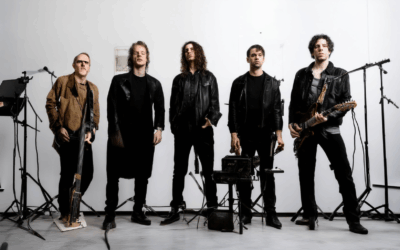Achieving the perfect rock guitar sound requires the right tools, and among these tools, distortion pedals stand out as indispensable. From the raw energy of garage rock to the polished intensity of stadium fills, distortion has become a hallmark of the rock genre. Whether you’re a seasoned guitarist or just starting your journey, understanding how to harness the power of distortion pedals can elevate your playing to new heights. In this article, we’ll dive into the essential distortion pedals that define rock guitar sounds, exploring how they shape the tones that have made the genre iconic. We’ll also touch on other crucial effects that complement these pedals, ensuring your guitar sounds as dynamic and exciting as the bands you admire. If you’re ready to unlock the secrets of rock guitar tone, let’s get started!
Key Takeaways
– Master Rock Guitar Sounds: Utilize distortion pedals like the wah pedal to achieve iconic rock tones, adding thickness and grit to your sound.
– Essential Gear: Explore a variety of pedals such as distortion, overdrive, compression, and modulation to craft dynamic and expressive tones.
– Wah Pedal Dominance: The wah pedal is a cornerstone of rock music, offering versatile tonal shifts and expressive solos.
– Tone Shaping: Shape your sound with EQ pedals and preamp pedals for precise tone control and amplified performance.
– Dynamic Textures: Add movement and interest to your sound with modulation pedals like chorus, flanger, and delay.
– Reliable Performance: Invest in a durable power supply and volume pedals to maintain consistency and prevent interference.
By integrating these pedals into your setup, you can unlock the full potential of rock guitar and create a sound that stands out.

How to Make Your Guitar Sound Like Rock
To achieve a rock-inspired guitar sound, consider the following steps:
- Amp Settings : Begin by adjusting your amplifier settings. Use a medium-high gain setting to mimic the thick, distorted tones common in rock music. Experiment with the volume control to balance saturation and clarity. A slightly lower volume can help maintain definition while still providing that punchy rock sound.
- String Gauge : Opt for heavier strings, such as Elixir or Ernie Ball, to increase the thickness of your sound. Heavier strings often provide a more robust and aggressive tone, which aligns well with rock music.
- Pickup Replacement : Consider upgrading your guitar’s pickups. Single-coil pickups are great for rock, but humbuckers or P90s can offer a more biting and aggressive tone. Consult with a tech or musician for personalized recommendations based on your guitar type.
- Distortion Pedal Usage : Use your distortion pedal wisely. Set it to medium or high gain to achieve that saturated, overdriven sound. Combine this with your amp’s gain setting to maximize the rock vibe.
- Effects Integration : While effects like the wah pedal can be useful, keep your setup simple initially. Focus on getting your core sound right before adding more complex effects.
- Playing Technique : Incorporate rock-specific techniques such as heavy string bending, sliding, and fingerstyle approaches. Practice rock licks and scales to develop the required dexterity and style.
- Dynamics and Energy : Work on dynamics to match rock’s energetic nature. Practice building and releasing tension in your playing to add intensity and emotion to your solos and riffs.
- Recording and Monitoring : Use a good speaker cabinet or headphones to monitor your sound accurately. Record yourself playing rock songs to identify areas for improvement and refine your tone.
By combining these elements, you can craft a rock-inspired sound that captures the essence of the genre.
Effects Used in Rock Music
The rock genre is renowned for its dynamic and powerful sound, achieved through the strategic use of various guitar effects. These effects enhance the tonal quality, texture, and overall character of the music. Below is an overview of the most common effects used in rock music:
Distortion Effects
- Tube Saturator:** Creates thick, creamy tones by simulating the warm, fuzzy sounds of old tube amplifiers.
- Fuzz Pedal:** Adds a grainy, aggressive texture to the signal, perfect for achieving that classic rock vibe.
- Overdrive/Distortion:** Provides a slightly overdriven sound, pushing the amp to its limits for a distorted edge.
Overdrive Effects
- Gain Boost:** Increases the gain of the signal, allowing for more volume and sustain.
- Preamp Simulator:** Mimics the preamp section of a tube amp, adding warmth and distortion.
Modulation Effects
- Chorus Pedal:** Adds a shimmering, lush sound by doubling the signal with slight delays.
- Flanger:** Creates a swirling, ethereal effect by modulating the wet signal.
- Pitch Shifter:** Changes the pitch of the notes, adding unique textures to the melody.
Reverb Effects
- Spring Reverb:** Simulates the natural decay of sound in a spring-based system, adding space and depth.
- Plate Reverb:** Delivers a smoother, more controlled reverb effect, ideal for atmospheric sounds.
Delay Effects
- Delay Pedal:** Creates a time-based echo effect, essential for rhythm and lead guitar work.
- Echo Pedal:** Adds a longer delay with a more pronounced reverb-like tail.
Compression Effects
- Compression:** Reduces the dynamic range of the signal, making the sound more consistent and punchy.
Noise Effects
- White Noise Generator:** Adds a hissy, crackling background noise to create interesting textures.
These effects are integral to shaping the iconic sounds of rock music, enabling guitarists to explore a wide range of tonal possibilities and add dimension to their performances. Experimentation with these effects is key to finding the perfect sound that suits your style.

Guitar Effects Used in “Like a Stone”
The Strokes’ “Like a Stone” is known for its raw, energetic, and gritty guitar sound. Here’s a breakdown of the key guitar effects likely used:
- Distortion : The song features significant distortion to achieve the thick, aggressive tone. This effect is crucial for the track’s raw energy and helps push the guitar sound to the forefront.
- Overdrive : Overdrive is another essential element, adding a sense of drive and edge to the guitar lines. This effect mimics the sound of a cranked amplifier, contributing to the song’s live-like vibe.
- Power Chords with Compression : The chording in “Like a Stone” is tight and punchy, suggesting the use of power chords combined with compression. Compression ensures these chords cut through the mix without getting lost in the track’s dense arrangement.
- Feedback and Sustain : Lead guitar moments in the song utilize feedback for texture and sustain to create long, resonant notes that add depth to the melodies.
These effects collectively contribute to the song’s unique and impactful sound, making it stand out as a defining track in The Strokes’ discography.

What is the Effects Pedal Called “the Effects Pedal” Used by Guitarists in Rock Music?
The effects pedal commonly referred to as “the effects pedal” in rock music is known as the wah pedal . This pedal is a type of filter effect that modifies a guitar’s tone and frequency, creating a sound reminiscent of a human voice. It is widely used across various rock genres, from funk to metal.
How Does the Wah Pedal Work?
The wah pedal functions by adjusting the frequency of the guitar’s signal. As you press down on the pedal, the low-end frequencies are emphasized, giving the sound a growling, bass-like tone. This effect is particularly popular in rock music for its ability to add texture and depth to solos and riffs.
How to Use a Wah Pedal in Rock Music
Guitarists often use the wah pedal during solos to create a more expressive and dynamic sound. By varying the pressure on the pedal, you can shift between different frequencies, mimicking the tonal qualities of a human voice. This technique is a staple in rock music, with many iconic solos featuring the wah pedal’s unique sound.
The Role of the Wah Pedal in Rock Music
The wah pedal has become a cornerstone of rock music, with artists across the genre spectrum incorporating it into their playing. Its versatility allows it to fit seamlessly into both clean and distorted tones, making it a favorite among rock guitarists.
Explore more about rock music gear and techniques on our Rock Gear Guide and discover how the wah pedal plays a pivotal role in shaping the sound of rock music.
Essential Guitar Pedals for Rock Musicians
When it comes to shaping the sound of rock music, guitar pedals play a crucial role. Whether you’re a seasoned guitarist or just starting out, having the right pedals can elevate your playing to new heights. Here’s a breakdown of the essential guitar pedals every rock musician should consider:
- Distortion Pedal : The backbone of rock sound, a distortion pedal is used to achieve that thick, gritty tone that defines the genre. Brands like Oedipus Band offer high-quality options tailored for rock musicians.
- Overdrive Pedal : Overdrive adds a touch of distortion and compression, perfect for creating that signature rock vibe. It’s often used to push amps into their sweet spot, giving music that punchy, dynamic feel.
- Compressor Pedal : A compressor helps even out your playing dynamics, making your sound more consistent. It’s a staple in rock music production, ensuring smooth transitions between chords and solos.
- Tone Pedal (Chorus/Vibrato) : Chorus and vibrato pedals add depth and movement to your sound. These effects are particularly popular in rock music to create a sense of space and interest.
- Delay Pedal : Delay adds a sense of rhythm and texture to your playing. It’s a go-to pedal for rock musicians who want to experiment with tempo changes and create atmospheric sounds.
- Reverb Pedal : Reverb gives your sound that ethereal quality, perfect for creating mood and space in rock tracks. It’s a must-have for achieving that iconic rock arena sound.
- Fuzz Pedal : Fuzz pedals take your sound to the next level with a harsh, aggressive tone. They’re essential for genres that thrive on raw energy, like hard rock and punk.
- EQ Pedal : An EQ pedal allows you to shape your sound by adjusting bass, mid, and treble levels. This is particularly useful for fine-tuning your tone during live performances.
- Looper Pedal : Looper pedals are great for creating layered sounds and experimenting with tape-like echo effects. They’ve become a favorite among rock musicians for their versatility.
- Power Supply : While technically not a pedal, a reliable power supply is essential to prevent noise and interference from causing issues with your gear. A good power supply ensures your pedals perform at their best.
By combining these pedals, you’ll have the tools needed to craft a sound that’s as unique as your personality. Whether you’re recording in the studio or performing on stage, these pedals will help you stand out in the world of rock music. Don’t forget to explore the full collection of guitar accessories available at Oedipus Band to find everything you need for your next performance.

Essential Guitar Pedals for Rock Musicians
For rock musicians, having the right guitar pedals can elevate your sound and performance. Here’s a breakdown of the essential pedals that every rock musician should consider:
1. Distortion Pedals
- Distortion pedals are the backbone of rock guitar. They add thickness, saturation, and grit to your sound. Some popular options include:
- Boss DS-1 : A classic choice known for its versatility and smooth operation.
- **MXR Distortion+: Offers a high-quality, tube-like distortion.
- Fender Joe Tex : Known for its aggressive and raunchy sound.
Explore our full review of the best distortion pedals .
2. Overdrive Pedals
- Overdrive pedals add a slight gain boost before distortion, allowing for smoother sustain and harmonic richness. Key models include:
- Ibanez TS808 : A staple in rock guitar for its warm overdrive.
- Xotic AC Preamp : Known for its ability to clean up amp sounds while adding gain.
- Danelectro Metal Pedal : Offers a unique blend of overdrive and distortion.
Learn more about overdrive pedals in our comprehensive guide .
3. Compression Pedals
- Compression pedals are essential for maintaining note definition and preventing loss of sustain. They’re particularly useful for rhythm playing:
- Maxon CP-1 : A favorite among professionals for its transparent compression.
- Dunlop XLR-95 : Offers studio-grade compression in a compact pedal.
- TC Electronic Stereo Compressor : Great for achieving thick, punchy tones.
Discover tips for using compression pedals effectively .
4. EQ Pedals
- EQ pedals allow you to shape your tone by adjusting bass, mid, and treble frequencies. They’re crucial for dialing in the perfect sound:
- MXR Mongoose : Offers a wide frequency range and precise adjustments.
- Xotic EG + C : Combines equalization and compression in one pedal.
- Voodoo Labs Pedro : Known for its smooth and musical EQ changes.
Check out our reviews of the top EQ pedals .
5. Modulation Pedals
- Modulation pedals add movement and interest to your sound through effects like chorus, flanger, and delay. These are great for creating dynamic textures:
- Chorus Pedals :
- DigiTech Chorus-Since : A classic choice with a lush, sweeping sound.
- Electro-Harmonix Small Clone : Known for its ability to thicken your signal.
- Flanger Pedals :
- Alesis Flanger-2 : Offers a rich, jet-plane-like effect.
- Strymon Flanger+ : Combines flanging with other modulation effects.
- Delay Pedals :
- Tape Echo Delay : Captures the vintage tape delay sound.
- Eventide TimeFactor : Known for its flexibility and high-quality delays.
Master modulation with our tutorials and reviews .
6. Preamp Pedals
- Preamp pedals are essential for cleaning up your signal and matching the tone of your amplifier. They’re particularly useful for live performances:
- Orange Squeezer : Known for its ability to boost gain and tighten your sound.
- ZVEX Fat Dog II : Offers a unique combination of preamp and overdrive.
- Fender Hot Rod Redondo : A versatile preamp with a focus on warmth.
Understand the role of preamp pedals in your setup .
7. Volume Pedals
- Volume pedals allow you to control your guitar volume without losing tone. They’re particularly useful for live performances:
- Ernie Ball VP Jr : Compact and reliable volume pedal.
- Barefoot Pedals Volume 2 : Offers a smooth and natural feel.
- Keeley VP-1 : Known for its premium build and sound quality.
Find the best volume pedals for your needs .
Conclusion
These pedals are essential for any rock musician looking to craft dynamic and expressive tones. Whether you’re recording in the studio or performing on stage, having the right pedalboard setup can make all the difference. Experiment with combinations and fine-tune your setup to achieve your signature sound.



0 Comments